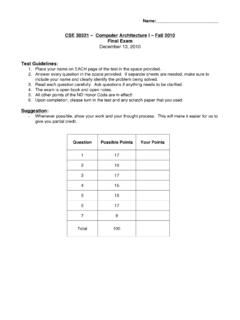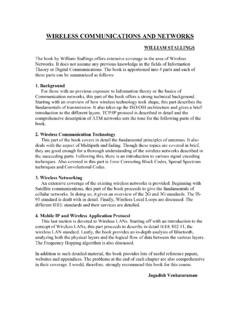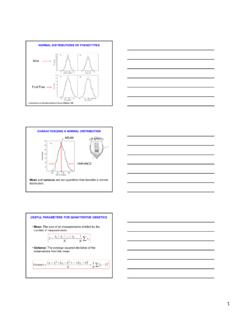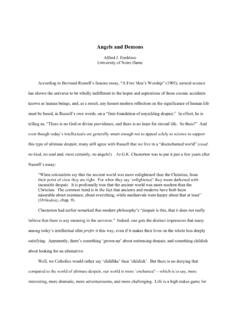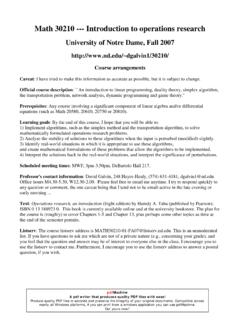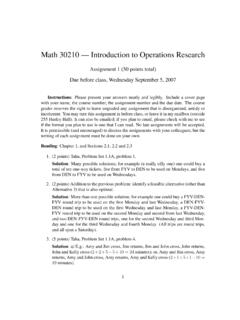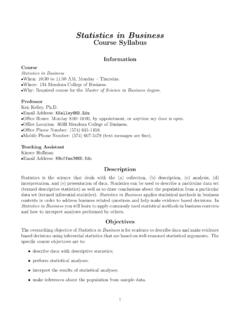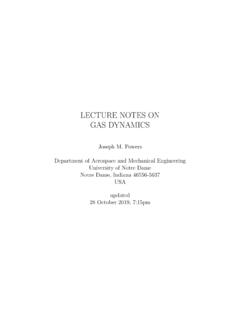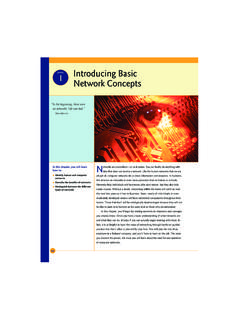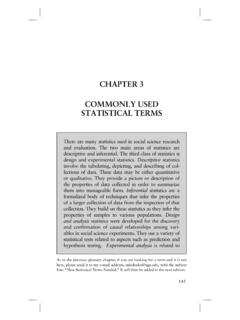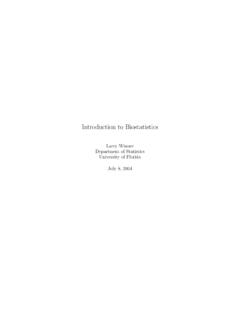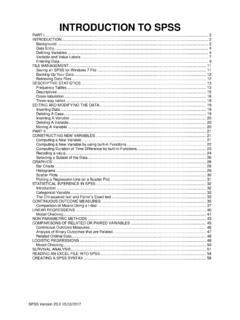Transcription of Using Stata for Categorical Data Analysis
1 Using Stata for Categorical data Analysis NOTE: These problems make extensive use of Nick Cox s tab_chi, which is actually a collection of routines, and Adrian Mander s ipf command. From within Stata , use the commands ssc install tab_chi and ssc install ipf to get the most current versions of these programs. Thanks to Nick Cox, Richard Campbell and Philip Ender for helping me to identify the Stata routines needed for this handout. This handout shows how to work the problems in Stata ; see the related handouts for the underlying statistical theory and for SPSS solutions.
2 Most of the commands have additional optional parameters that may be useful; type help commandname for more information. CASE I. COMPARING SAMPLE AND POPULATION DISTRIBUTIONS. Suppose that a study of educational achievement of American men were being carried on. The population studied is the set of all American males who are 25 years old at the time of the study. Each subject observed can be put into 1 and only 1 of the following categories, based on his maximum formal educational achievement: 1 = college grad 2 = some college 3 = high school grad 4 = some high school 5 = finished 8th grade 6 = did not finish 8th grade Note that these categories are mutually exclusive and exhaustive.
3 The researcher happens to know that 10 years ago the distribution of educational achievement on this scale for 25 year old men was: 1 - 18% 2 - 17% 3 - 32% 4 - 13% 5 - 17% 6 - 3% A random sample of 200 subjects is drawn from the current population of 25 year old males, and the following frequency distribution obtained: 1 - 35 2 - 40 3 - 83 4 - 16 5 - 26 6 - 0 Using Stata for Categorical data Analysis - Page 1 The researcher would like to ask if the present population distribution on this scale is exactly like that of 10 years ago.
4 That is, he would like to test H0: There has been no change across time. The distribution of education in the present population is the same as the distribution of education in the population 10 years ago HA: There has been change across time. The present population distribution differs from the population distribution of 10 years ago. Stata Solution. Surprisingly, Stata does not seem to have any built-in routines for Case I, but luckily Nick Cox s chitesti routine (part of his tab_chi package) is available. Like other Stata immediate commands, chitesti obtains data not from the data stored in memory but from numbers typed as arguments.
5 The format (without optional parameters) is chitesti #obs1 #obs2 [..] [ \ #exp1 #exp2 [..] ] In this case, . chitesti 35 40 83 16 26 0 \ 36 34 64 26 34 6, sep(6) observed frequencies from keyboard; expected frequencies from keyboard Pearson chi2(5) = Pr = likelihood-ratio chi2(5) = Pr = +--------------------------------------- ----+ | observed expected obs - exp Pearson | |--------------------------------------- ----| | 35 | | 40 | | 83 | | 16 | | 26 | | 0 | +--------------------------------------- ----+ The significant chi-square statistics imply that the null should be rejected.
6 The distribution today is not the same as 10 years ago. Alternatively, we could have the data in a file and then use the chitest command, the data would be . list observed expected, sep(6) +---------------------+ | observed expected | |---------------------| 1. | 35 36 | 2. | 40 34 | 3. | 83 64 | 4. | 16 26 | 5. | 26 34 | 6. | 0 6 | +---------------------+ Using Stata for Categorical data Analysis - Page 2 We then give the command.
7 Chitest observed expected, sep(6) observed frequencies from observed; expected frequencies from expected Pearson chi2(5) = Pr = likelihood-ratio chi2(5) = Pr = +--------------------------------------- ----+ | observed expected obs - exp Pearson | |--------------------------------------- ----| | 35 | | 40 | | 83 | | 16 | | 26 | | 0 | +--------------------------------------- ----+ Other Hypothetical Distributions.
8 In the above example, the hypothetical distribution we used was the known population distribution of 10 years ago. Another possible hypothetical distribution that is sometimes used is specified by the equi-probability model. The equi-probability model claims that the expected number of cases is the same for each category; that is, we test H0: E1 = E2 = .. = Ec HA: The frequencies are not all equal. The expected frequency for each cell is (Sample size/Number of categories). Such a model might be plausible if we were interested in, say, whether birth rates differed across months.
9 If for some bizarre reason we believed the equi-probability model might apply to educational achievement, we would hypothesize that people would fall into each of our 6 categories. With the chitesti and chitest commands, if you DON T specify expected frequencies, the equi-probability model is assumed. Hence, . chitesti 35 40 83 16 26 0, sep(6) observed frequencies from keyboard; expected frequencies equal Pearson chi2(5) = Pr = likelihood-ratio chi2(5) = Pr = +--------------------------------------- ----+ | observed expected obs - exp Pearson | |--------------------------------------- ----| | 35 | | 40 | | 83 | | 16 | | 26 | | 0 | +--------------------------------------- ----+ Using Stata for Categorical data Analysis - Page 3 Or, Using a data file.
10 Chitest observed, sep(6) observed frequencies from observed; expected frequencies equal Pearson chi2(5) = Pr = likelihood-ratio chi2(5) = Pr = +--------------------------------------- ----+ | observed expected obs - exp Pearson | |--------------------------------------- ----| | 35 | | 40 | | 83 | | 16 | | 26 | | 0 | +--------------------------------------- ----+ Obviously, the equi-probability model does not work very well in this case.
